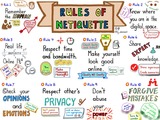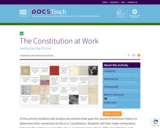
Full text of the declaration adopted by South Carolina as justification for its secession from the Union.
- Subject:
- Social Studies
- Material Type:
- Primary Source
- Provider:
- Yale University
- Provider Set:
- The Avalon Project
- Date Added:
- 10/03/2023

Full text of the declaration adopted by South Carolina as justification for its secession from the Union.

An online exhibit telling about the original creation of the Declaration of Independence and its many forms after. W.11-12.9b US Doc Analysis

A 1967 federal court order resulted in this document, which mandated school desegregation in Birmingham.

Read a brief overview of the history behind this executive order that integrated the segregated military and then read a copy of the complete original text.

"This website presents images of the 51 volumes of John Quincy Adams's diary in the Adams Family Papers at the Massachusetts Historical Society. Adams began keeping his diary, more than 14,000 pages, in 1779 at the age of twelve and continued until shortly before his death in 1848."

The complete diary of one of the "Court Ladies" at the Japanese Imperial Court during the early 11th century. Provides many examples of Japanese poetry from the period.

Students live in a world many teachers did not: one with the internet, social media, and email. Navigating “netiquette” is imperative for personal development, mental health, and academic success. The focus of this content package is to provide teachers with background knowledge on the importance of teaching netiquette along with lesson plans and supplementary materials. This package provides a variety of high-quality instructional materials to support instruction of netiquette with a focus on Digital Wellbeing and Digital Footprints.

The Digital Library provides links to the complete texts of 14 of Anthony Trollope's works in many different formats.

This National Humanities Center essay describes an overview of the first Great Awakening. Discussion tips for teachers are included.

This activity presents students with two versions of President Franklin D. Roosevelt's famous speech following the Japanese attack on Pearl Harbor-an earlier typewritten draft and his final reading copy. Students will read, analyze, and contrast these two versions to see the impact of his changes to the overall message and tone of the speech. W.11-12.9b US Doc Analysis

How can you actually bring history to life? Here are some tools from the National Archives that allow students to create their own projects using primary-source based activities that develop historical thinking skills. Special historical eras are offered as well as different types of activities. You can create your own, but must register with the National Archives site first.

In this activity, students will analyze documents that span the course of American history to see examples of 'checks and balances' between the legislative, executive, and judicial branches in action. Students will then match the documents they have examined with an appropriate description of the branches of government involved in the action.

In this activity, students will analyze documents that illustrate the relationship between the legislative, executive and judicial branches. Using the scale in Weighing the Evidence, students will decide whether the United States government more appropriately fits the concept of 'separation of powers' or 'shared powers.'

In this activity students will analyze documents that span the course of American history to determine their connection to the U.S. Constitution. Students will then make connections between the documents they have examined and the big ideas found within the Constitution.

The Supreme Court's opinion in Brown II reflects the struggle between federal and state governments on how and when school desegregation would occur.

The Civil Rights Act of 1964 helped enforce the Brown ruling, a decade later.

This collection of excerpts from legislation and court decisions documents key phases of the legal struggle to gain and implement equal education.

The Supreme Court's 1927 opinion in Gong Lum v. Rice affirmed legalized school segregation.

The Supreme Court's 1896 ruling legalized the "separate but equal" doctrine that sanctioned segregation.

The background essay provided in this lesson plan on the later ramifications of the 14th Amendment explains the Congressional legislation of all types during Reconstruction. Click on the 'View' button to read the Amendment.